
Product test
OnePlus 15 tested: the 24-hour smartphone
by Jan Johannsen
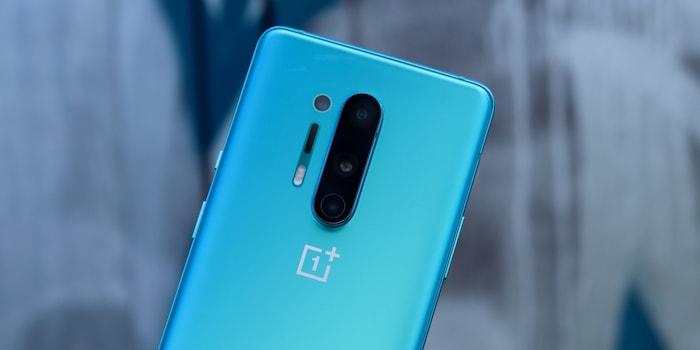
The OnePlus 8 Pro's data sheet contains only the best of the best and finally also wireless charging. The test shows that OnePlus has assembled a very good smartphone from high-quality individual parts.
OnePlus has a simple recipe for success: the company makes smartphones for fans. Installing excellent hardware, customising Android well and staying below the competition in terms of price. This works and the Chinese company has established itself as a competitor to the top models from Apple, Samsung and Huawei.
To my eyes, the 6.78-inch display of the OnePlus 8 Pro looks outstanding. However, the difference to other good displays is not so obvious that I would no longer look at them. The team from Displaymate evaluates smartphone screens and was allowed to scrutinise the OnePlus 8 Pro in advance and came to an even more positive conclusion than I did: for them, it is currently the best smartphone display.
The AMOLED screen of the OnePlus 8, known as the "Fluid Display", was developed in collaboration with Samsung and has a Quad HD+ resolution of 3168×1440 pixels. This ensures a very sharp and detailed image. The colours are vibrant and saturated, while at the same time appearing natural and the blacks are really nice and dark. The built-in E3 panel is said to have 40 per cent less blue light than other displays and is therefore easier on the eyes. The maximum brightness of 1300 nits ensures that you can easily recognise the screen content even in the sunshine.
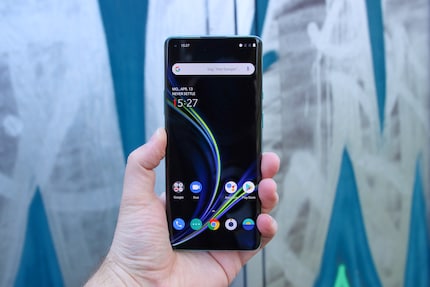
The refresh rate of 120 Hertz ensures extremely smooth scrolling, although I don't always notice this - and it's not yet supported by every app. Or have I just got used to the faster refresh intervals of the display too quickly? Just like I'm getting used to the HDR Boost and HDR10+ support on YouTube, Netflix and Prime Video, which I regard as standard and don't want to give up. To save battery life, you can set a refresh rate of 60 Hertz and also reduce the resolution to Full HD+ - both of which should have a positive effect on battery life.
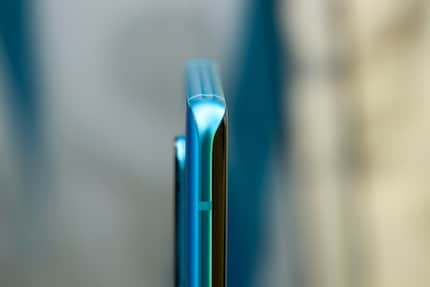
The side edges of the display are very curved. The curvature is too strong for me. Too much content is lost at the edges and I am bothered by the reflections that often occur there. The front camera, on the other hand, is a good solution. It is located in a small hole in the top left-hand corner of the screen. It usually disappears into the black bar at the top edge and if it is surrounded by a light-coloured background, it is still not distracting. According to OnePlus, it has abandoned the retractable camera in the OnePlus 7 series, as the necessary hole in the display has become smaller over the past year and the smartphone saves weight without the comparatively heavy mechanical parts of the movable camera, as OnePlus explained at the presentation.
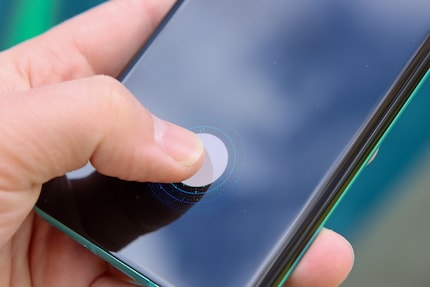
To unlock the OnePlus 8 Pro, place your finger on the display. The fingerprint sensor, which usually unlocks the smartphone quickly and reliably, is located inside or underneath it. In my case, however, even slightly damp fingers caused the recognition rate to drop significantly. In summer, facial recognition or the PIN code could therefore become the preferred unlocking method.
The front camera of the OnePlus 8 Pro delivers selfies with a resolution of 16 megapixels. The result is photos with lots of detail and natural-looking colours. I recommend activating the HDR mode, as it not only peps up the colours a little, but also balances out contrasts and makes the overexposed sky blue - including pretty clouds. Even without a second camera, the bokeh effect ensures a blurred background that is well separated from the person. But don't look too closely. Because then you would still recognise a lot of inaccuracies at the edge.


There are four camera lenses on the back of the OnePlus 8 Pro. The main camera with a 48-megapixel sensor, a wide-angle camera with a resolution of 48 megapixels, a telephoto lens with eight megapixels and a 5-megapixel colour filter camera.
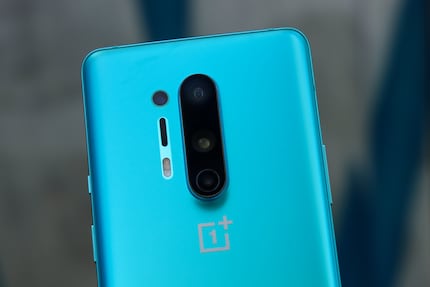
The main camera with the Sony IMX689 sensor combines four pixels into one as standard. The photos then only have a resolution of twelve megapixels and should have a better image quality. I can't recognise any differences in quality in the reduced view on a smartphone or notebook. I only notice them when I enlarge the photo and view it at 100 per cent (48 megapixels) and 200 per cent (12 megapixels), for example, to get the same image detail. With 48 megapixels, you can really recognise a few more details. But it doesn't really improve the overall picture. In other words: the 12 megapixels are not a disadvantage.
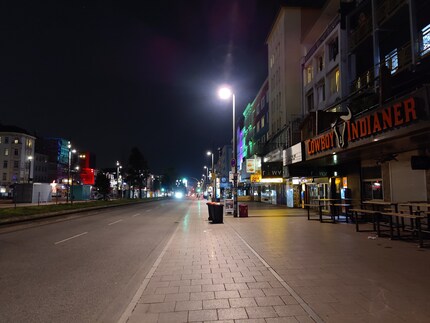
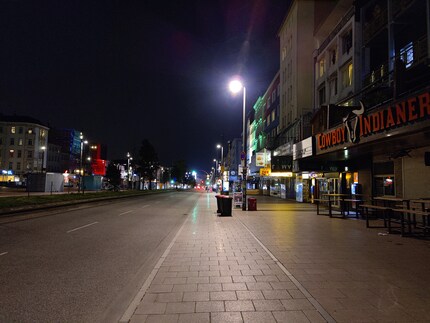
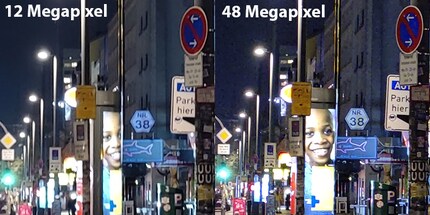
The main camera handles contrasts well, but it's worth activating HDR mode to balance them out even better. The colours look natural and the level of detail is high. The result is pleasing without standing out from many other good smartphone cameras.
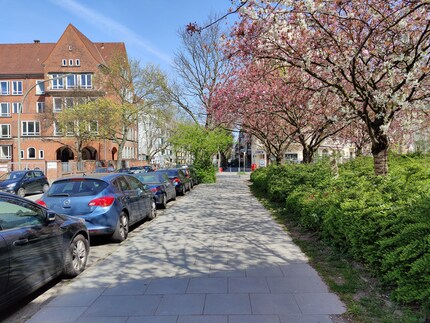

At night, the automatic mode already delivers presentable images, which the night mode brightens and refines with a longer exposure time. However, the night shots are not as bright as the Pixel 4. But even in low light, I am impressed by the colour reproduction and the level of detail, which is not quite as good as during the day.
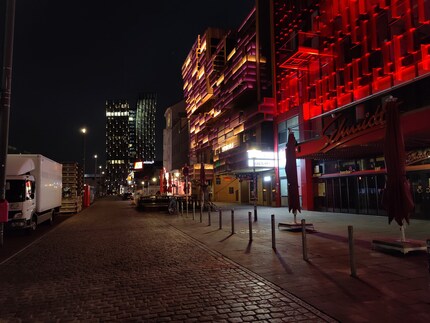
The wide-angle camera also has a 48-megapixel sensor (Sony IMX586), delivers images with a viewing angle of 120 degrees and also has access to HDR functions and night mode. Apart from the optical distortion, the quality of the images is very close to that of the main camera. This is not usual. The telephoto lens, on the other hand, has some small, but not significant, drawbacks. It only has a resolution of 8 megapixels and provides triple magnification with a hybrid zoom.
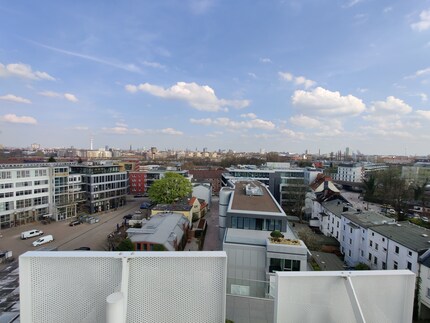
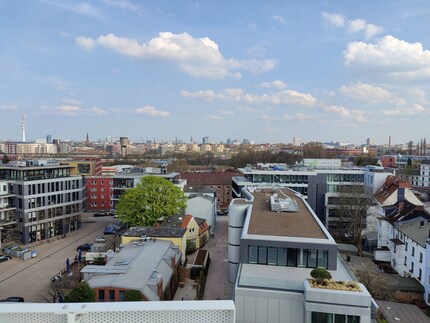
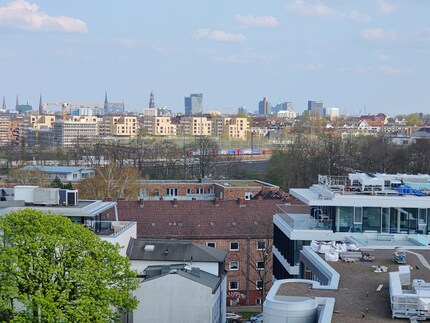
You can activate a super macro mode in the camera app. This uses the wide-angle camera and ensures that you can get much closer to a subject than with the main camera.

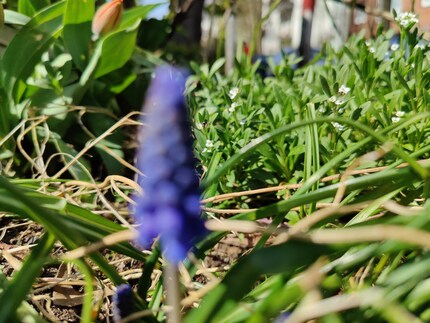
The fourth camera is a so-called colour filter camera. It has a resolution of 5 megapixels and OnePlus uses it to offer filters that software alone should not be able to achieve so well. There are four effects to choose from. "Matt" is very reminiscent of matt photo prints. "Vivid" unsurprisingly provides more vibrant colours. "B/W" is a really chic filter for black and white shots and "Photochrome" is reminiscent of a negative, but is something else.





You can find all photos in original resolution here.
You can record videos with the OnePlus 8 Pro with up to 4K and 60 FPS. Slow motion is possible with 480 FPS at 720P and 240 FPS at 1080P. OnePlus promises a "significantly higher dynamic range" and the hybrid image stabilisation is said to be as "good as a gimbal". Three microphones are available for audio zoom during video recording, which should, for example, ensure that a conversation stands out clearly from the traffic noise in the background. However, I haven't yet had the time to test the video functions in detail.
The OnePlus 8 Pro has beautiful packaging. The front and back are made of curved glass and the blue and green colour variants are particularly eye-catching. They are beautifully matt, soft to the touch and fingerprints have a hard time sticking to them. This is not the case with the glossy black version. Regardless of the colour, the smartphone's housing is waterproof, which OnePlus proves with an IP68 certification.
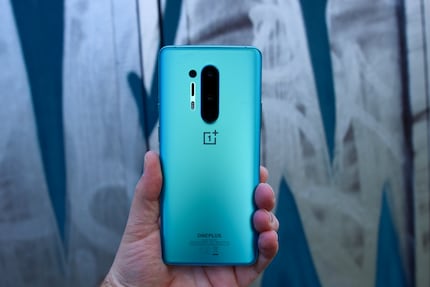
Under the bonnet, the Snapdragon 865 together with the Adreno 650 graphics chip delivers more power than you usually need. The question of whether you should take the OnePlus 8 Pro with eight or twelve gigabytes of RAM should only play a role in a few applications and is more a question of colour. The black version has eight gigabytes of RAM and 128 gigabytes of storage space on board. The green and blue versions have twelve and 256 gigabytes respectively. My green test device did not reach its performance limits with graphically demanding games or VR or AR applications. And without it getting noticeably warm. Compared to the predecessor models 7 Pro and 7T, benchmark tests showed a significant leap and even the "old" devices were no lame horses.
The built-in chipset also has a side effect. It has a 5G modem on board, making every smartphone in the OnePlus 8 series a 5G smartphone. Unlike Samsung, for example, there is no extra 5G model. With Bluetooth 5.1, WiFi 6 and USB-C 3.1, the smartphone is also equipped with wireless and wired connections in line with the latest standards. However, there is no 3.5 mm audio connection. However, the Alert Slider, a OnePlus trademark, is still present. With the switch on the right-hand side, you can switch between silent, vibrate and ring.
The battery of the OnePlus 8 Pro has a generous capacity of 4510 mAh and easily gets me through the day. However, it is only enough for a whole second day if I hold back. But thanks to the fast charging function, which also works wirelessly for the first time, the smartphone can recharge while I get ready in the morning. According to the manufacturer, Warp Charge 30T manages to charge the battery to 50 per cent in 23 minutes. The wireless charger is only just behind. With Warp Charge 30 Wireless, it takes 30 minutes to charge the battery halfway. This is significantly faster than with wireless charging and only works with the in-house charger. It takes significantly longer with other charging pads with the Qi standard.
You can also charge other smartphones wirelessly with the OnePlus 8 Pro and ideally help your friends with an empty battery out of a jam. If you connect the 8 Pro for charging, it may not charge immediately. Over time, the smartphone learns when you get up in the morning and pauses the charging process when the battery has reached a certain charge level so that it only finishes charging shortly before you wake up. This is intended to protect the battery as there are fewer short charging cycles. However, you can force the battery to charge at any time if you have other plans than the software.
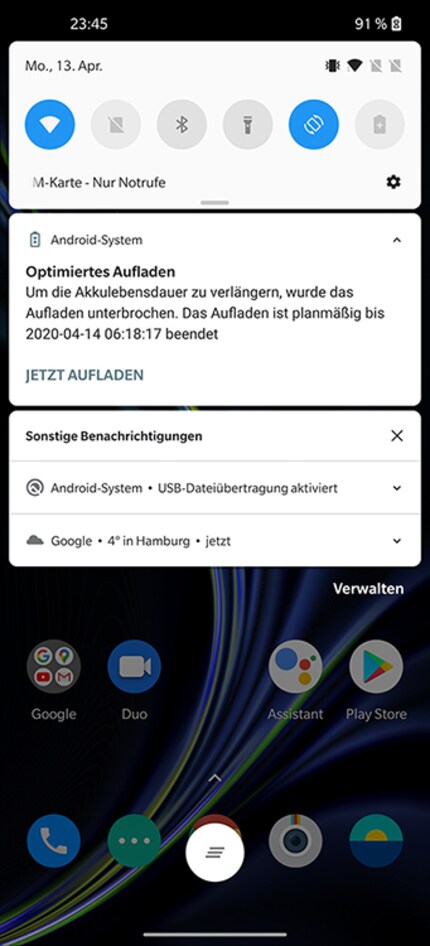
The OnePlus 8 Pro has two speakers. They are located on the earpiece at the top edge and at the bottom edge of the smartphone. Together, they provide stereo sound, which is very good for a smartphone. What's more, you can still hear something if you cover one of the speakers.
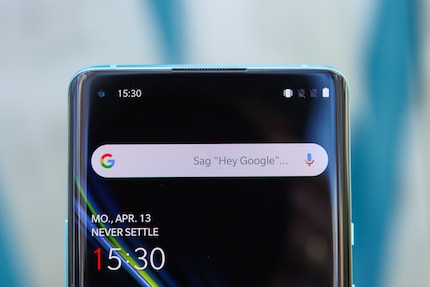
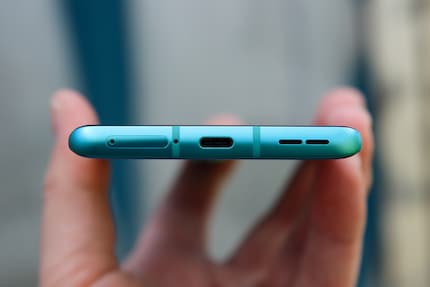
The OnePlus 8 Pro runs OxygenOS. This is an Android version customised by OnePlus, which is based on Android 10 and you don't miss out on anything and get a few things in addition.
Together with the OnePlus 8 Pro, OnePlus has also introduced a cheaper smartphone: The OnePlus 8 - without the Pro. There are many similarities in terms of hardware and software, but there are also differences, which mainly concern the display and the camera.
The display of the OnePlus 8 is slightly smaller at 6.55 inches, has a Full HD+ resolution, a refresh rate of 90 hertz and the curvature at the side edges is less pronounced. The battery has a slightly lower capacity of 4300 mAh and, above all, the OnePlus 8 does not support wireless charging. Although the main camera also has a resolution of 48 megapixels, it has a different sensor (IMX 586) than the Pro model. The wide-angle camera is the one from the OnePlus 7T (Pro) and has a lower resolution. The colour filter camera and the telephoto lens are missing.
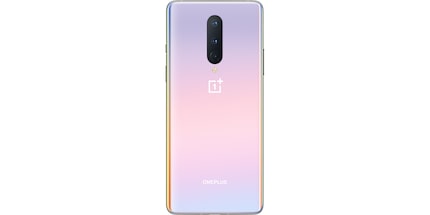
OnePlus has not obtained IP certification for the housing of the OnePlus 8, but according to the manufacturer, it should still be waterproof. There is no blue version, but the "Interstellar Glow" colour version is only available here. The combination of 8 and 128 gigabytes is available in black and green and the variant with 12 and 256 gigabytes is available in green and Instellar Glow.
OnePlus has presented an outstanding smartphone with the OnePlus 8 Pro. There is more to praise about the hardware equipment (5G for everyone, very good camera, more power than is usually necessary, large battery, beautiful display) than to criticise (strong curvature of the display edges).edges) and I still like OxygenOS better than some of the other user interfaces that other manufacturers put on top of Android.
When I was but a young student, I'd sit in my friend's living room with all my classmates and play on his SuperNES. Since then I've had the opportunity to test out all the newest technology for you. I've done reviews at Curved, Computer Bild and Netzwelt, and have now arrived at Galaxus.de.